Social media marketing, also called SMM, is the practice of connecting with your target audience through social media channels — think of brands promoting their products, creating content, or running ads on LinkedIn, Instagram, Facebook, Snapchat, etc.
In today’s day and age, SMM is especially important considering the following:
- 5.85 billion people are expected to join social media by 2027.
- Users spend more than 2.5 hours on social media every day.
- 28% of customers rely on social media platforms to research brands.
All in all, this makes for a great case for using social media marketing strategies to drive engagement and conversions.
In this article, we’re covering just that — aka, all the tactics marketers can use on social media to capture the attention of their target audience and convert prospects.
So, let’s explore these strategies, shall we?
The different kinds of social media marketing strategies
1. Influencer marketing
Influencer marketing entails partnering with different influencers (e.g., micro, nano, mega) to build trust or awareness about your product or leverage the influencer’s popularity to get new customers.
Examples include Ryan Reynolds promoting MNTN and Shay Mitchell promoting H&M.
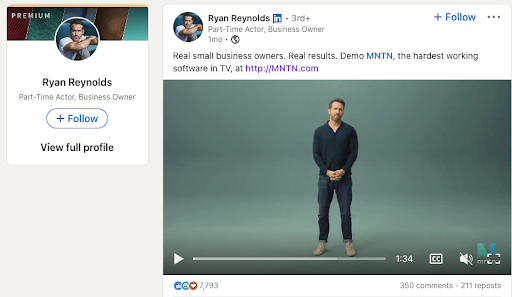
2. Content marketing
With content marketing, companies share thought-leadership content, link to blogs, or share other high-quality content that adds value.
For example, Luxury Presence, a company specializing in real estate SEO services, creates tons of educational content to get the attention of real estate agents.

3. Sponsored content
Sponsored content refers to paid ads and product placements. More often than not, such posts are accompanied by a “Promoted,” “Sponsored,” or an “Ad” tag.
For reference, here’s an example of a sponsored post:
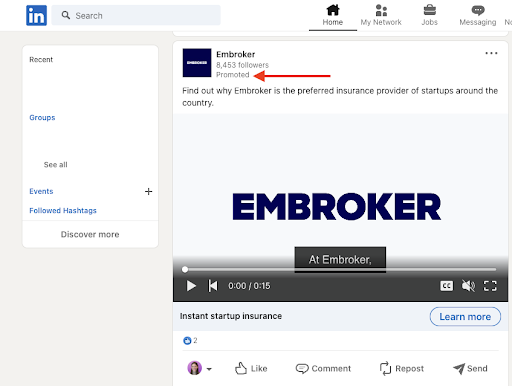
Alternatively, sponsored content may also be in the form of direct messages you receive on social channels (these don’t come with a tag). For reference:
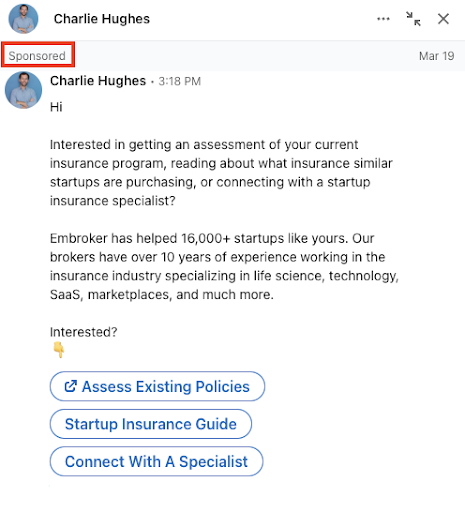
4. Community management
To build a loyal following for your product, you need to build brand loyalty (think about brands like Costco or Starbucks and the brand loyalty they have).
To get similar results, you must (a) create an excellent product and (b) create and manage a community.
For example, Xbox One runs a subreddit to build a community. On the other hand, brands like Audi, Nissan, and The Economist host Ask Me Anything (AMA).
Other brands prefer to manage communities through interactions on platforms like Twitter or by creating forums.
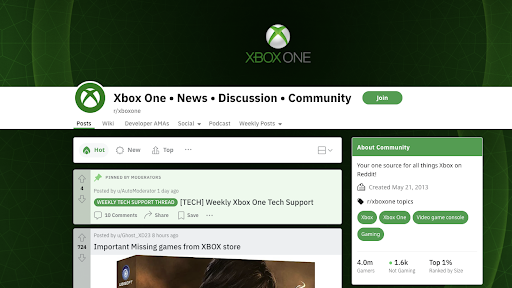
Regardless of their size or the products/services they sell, businesses must rely on a mix of strategies to get noticed.
For example, both a small local florist and a big brand like Costo’s flowers can increase their online visibility by investing in sponsored ads, promoting special events, and interacting with customers to sell their products.
How to drive engagement using social media?
1. Create shareable content
The simple truth of SMM is that the content that’s shareable (aka, thought-leadership posts, memes, relatable content) gets shared.
So, one of the key ways to get your audience to engage with you is to create content worthy of reading.
You can research different types of competitors to see what they are doing, interact with your audience to ask them what they want to see, analyze your current feed to check for overarching patterns, and find content gaps to create engaging posts.
Once that’s done, find out which SMM strategies to apply — – for example, a leather jacket brand may find out that their competitors have been successful with influencer marketing, so maybe they can try partnering with influencers or affiliates.
Here’s a real-life example of “shareable content” for you — – Grammarly, an AI editor and plagiarism checker, often posts educational and relevant content across social media channels.
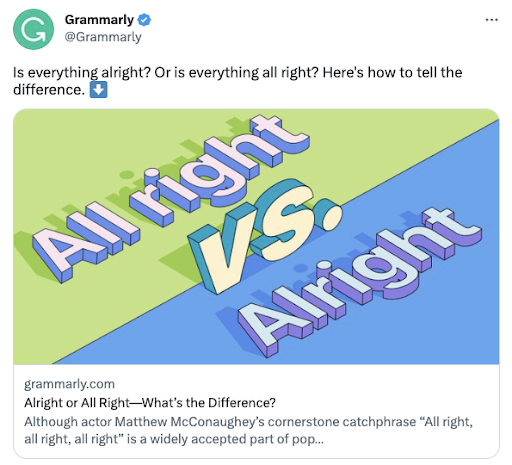
Another example of “sharable content” is Certified Keto Diet with educational Instagram posts, sharing keto diet recipes and food recommendations for its followers.
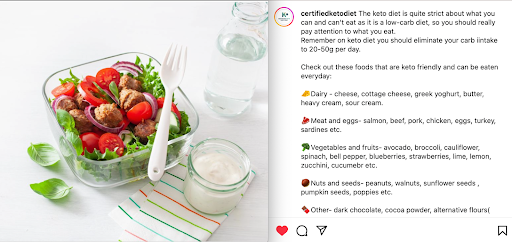
2. Encourage user-generated content
Promoting user-generated content (UGC) is a great way to stand out from the competition while getting your customers to interact with you. Bonus points for saving tons of marketing dollars and building your brand reputation simultaneously.
So, if you wish your audience would create UGC, you need to give the content:
- Purpose or direction
- Host contests
For example, you can look at Canva, which often hosts contests promoting UGC content.
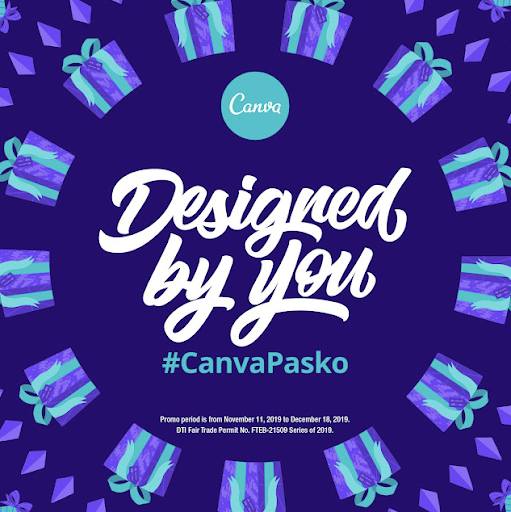
3. Run contests or giveaways
Keeping with the theme of our previous ideas, running contests and giveaways is an excellent method of getting your customers to interact with you.
Everybody loves the rush of winning something, and when you run contests/giveaways, you can:
- Give something as simple as a collection from your brand.
- Go above and beyond, like gifting free vacations.
For example, TooFaced Cosmetics partnered with Hill House (thus creating publicity for both brands) for a giveaway. Both these brands gave something from their own collection.
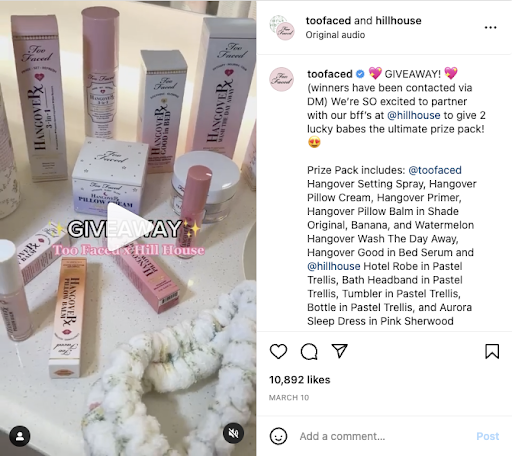
4. Use hashtags effectively
Here’s the 411 about SMM: creative, relevant, and trending hashtags to get you noticed.
Check out any brand post on any social media page — they’ll probably use hashtags to expand the reach and improve the findability of their posts.
For example, here’s Visme on Twitter using hashtags.
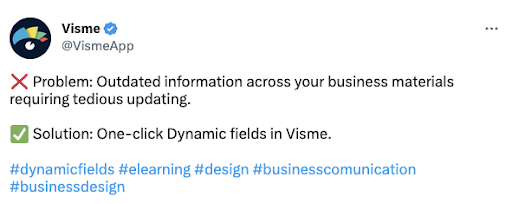
However, using hashtags is an art. So, make sure to:
- Keep up with trending ones
- Don’t overuse them
- Use relevant and relatable hashtags
5. Consider hosting webinars and live events
Webinars and live events are excellent ways to get in touch with your customers, to educate them about your product, build authority, or hear about their pain points.
For example, here’s Microsoft prompting its webinar on Twitter.
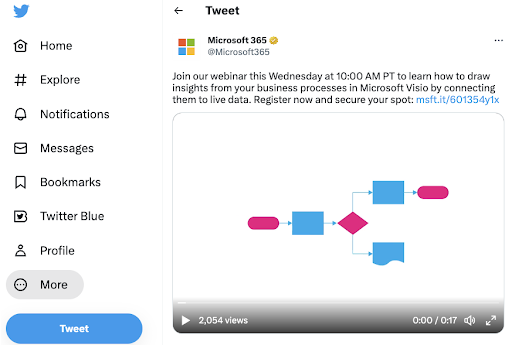
How to drive conversions using social media?
1. Use social proof
Social proof, such as testimonials, brand shoutouts, awards, follower count, recognitions, user reviews, etc., is an excellent way to build your customers’ trust and can help you drive conversions.
Here’s an example of BriteCo, a jewelry insurance company, showing that they’ve been awarded “Best Engagement Ring Insurance” by a trusted third party, Investopedia.
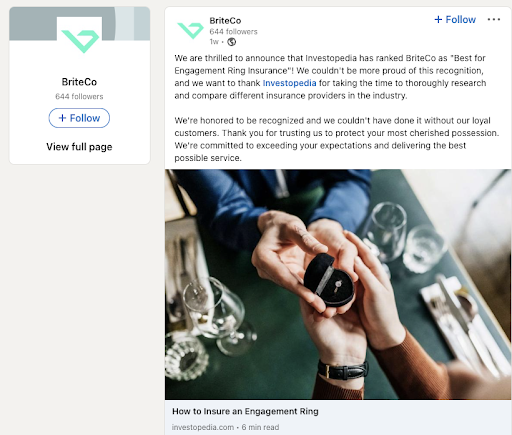
On that note, a word of advice: it’s great to leverage social proof when available, but don’t ever go around creating it.
For example, many brands as well as Instagram influencers buy followers. However, when your engagement rates don’t match your follower count, your audience can easily find out that you’ve paid for followers, and hence you’d no longer be viewed as a trusted company.
2. Offer exclusive discounts or promotions
Exclusive coupons or promotional offers to drive conversions because:
- They make your customers feel special.
- Your customers feel like they’d get your products at a steal price.
- They bring up a sense of urgency and scarcity of demand.
For example, Lizzie Davey offers her email subscribers an exclusive 20% discount.
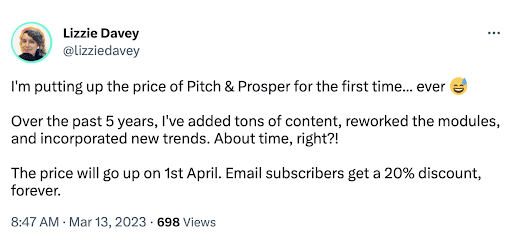
You can promote such offers during special occasions or share them with loyal customers.
3. Create landing pages optimized for social media traffic
Website landing pages should always reflect the offer you post on social media or any other platform (e.g…. if you run paid ads on LinkedIn about a 50% discount, your landing page should convey the same offer).
Case in point: The LinkedIn ad below talks about FRM certification that takes users to the FRM certification page once they click on it.
Here’s the LinkedIn video ad:
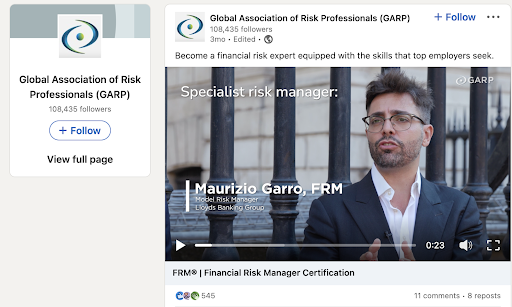
And here’s the corresponding website landing page:

4. Run retargeting ads
Retargeting ads are a great way to capture potential leads who showed interest in your product/service but didn’t purchase it for some reason.
To increase your chances of conversion, you can send them discounts, offer free shipping, or send personalized pitches.
Regardless of whichever strategy you choose, we recommend using a customer data platform to ensure you’re targeting customers based on their preferences.
Brands like Madewell, Everlane, Love Wellness, Glossier, ASOS, etc., run retargeting ads on social media platforms.
5. Leverage influencers
By partnering with influencers as affiliates or collaborators, you can increase the trustworthiness of your product/service and/or tap into the influencer’s followership.
Popular names like CRED, Daniel Wellington, Target, Gymshark, etc., use influencer marketing for promotion.
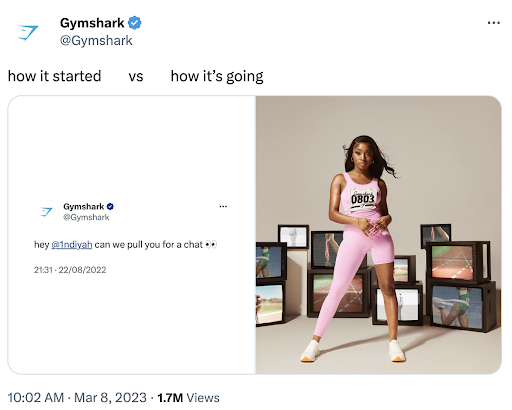
How to conquer social media advertising?
Social media advertising refers to sponsored ads you run on social channels to educate customers about your product, reach a wider audience, or convert leads.
When you’re new to the social media game (or when you’re running exclusive offers), it’s best to run paid ads to reach the maximum number of people.
The paid ads you run can differ based on the channel (e.g., on LinkedIn, you can run inMail, sponsored content, and text ads. However, on Pinterest, you can run app-install, photo, video, shopping, or carousel ads).
You should use different ad types for different goals:
- Story ads to increase awareness
- Shopping ads to convert prospects
- Text or video ads to educate consumers
For example, here’s Fidelity running a video ad to educate prospects about the difference between an HSA and HRA account.
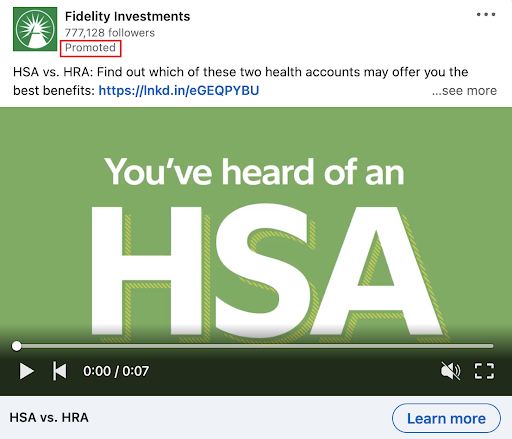
How to measure success?
To measure the success of your social media marketing strategy, first, define which key metrics work for you (e.g., engagement, conversions, return on investment, brand mentions, follower count, page reach, etc.).
Once you define the metrics, use tools like VBOUT, Social Sprout, Hootsuite, Tailwind, or Buffer to track them.
From there, run A/B tests to boost performance, find out areas of improvement, keep up with trends, find content gaps, and participate more on social channels to increase your voice share and get noticed.
Final thoughts
In the modern world, your social media presence says a lot about you. If you have an excellent social presence, it can help you get noticed, boost conversions, and help build authority.
At VBOUTbout, we understand the importance of social presence. This is why we’ve created a tool that allows you to manage all your social channels from one place.
While we can say a lot about this tool, we’d rather you experience it yourself. If it tickles your fancy, get a free 14-day trial of VBOUT (don’t worry, there are no hidden fees, credit card requirements, or contracts to be signed).
To your social media success!
About the author
Ian David started his career in brick-and-mortar retail management, which quickly included eCommerce and digital marketing as well. He is an avid reader and a self-taught expert in SEO and content marketing. He writes for several publications on a variety of digital marketing topics. Recently, his focus has been on using influencer and affiliate marketing to drive more conversions.
Don’t forget to share this article
